Sculpture can resonate and its value amplify when it is contrasted and inserted in dialogue with other sculptural pieces or different media. This curatorial contrast was explored by the exhibition Il lato oscuro della scultura. Canova Jodice (“The dark side of sculpture. Canova Jodice”), which took place in the summer of 2015 in the Studio Museum Francesco Messina (Milan, Italy). The exhibition established parallels between the marble sculptures of Canova and their black and white photographic reproductions realised by Mimmo Jodice. Moreover, the exhibited works were also put in relationship with the peculiar location and the permanent collection housed there.
The Studio Museum Francesco Messina is indeed a particular location for an art institution. In fact, it is housed in the former San Sisto church, in a cross street of one of the main arteries of Milan’s city centre. The building’s origins date back to the 9th century, however its current configuration is due to a systematic project from the early 17th century. Heavily damaged during WW2, deconsecrated and close to demolition, in 1969 the church was given by the Municipality of Milan to the Sicilian sculptor Francesco Messina, who restored the space and transformed it into his artist studio and monographic museum. After the artist’s passing, the Studio Museum was opened to the public by the Municipality of Milan, with a permanent collection of over 100 drawings and sculptures by Messina. Since 2014 the location has also hosted contemporary art events that promote the work of emerging artists and attempt to connect them with Messina’s art, building bridges between past and contemporary creative expression, and encouraging reflections on the role of sculpture and art in today’s society.
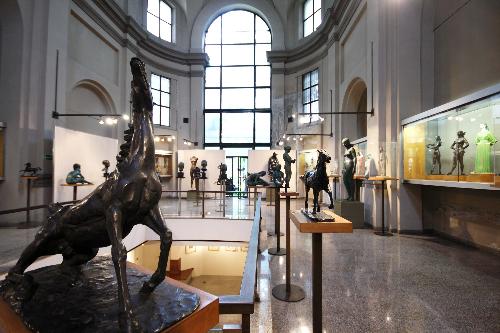
Interiors of the Studio Museum Francesco Messina in Milan 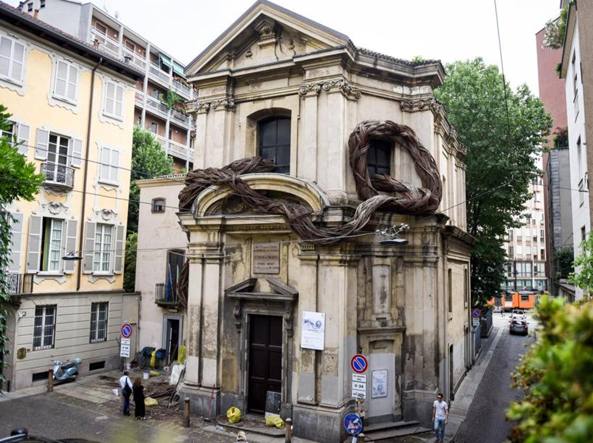
Exterior view on the former San Sisto church (current Studio Museum Messina) with an installation by the artist Leonardo Nava, 2018
The connection between past and present is the narrative thread throughout the whole exhibition concept, starting from the very central theme of Messina’s art. In fact, classicism and the passion for antiquity emerge as a reference and model in the representational choices of the sculptor. Instead of passively imitating it, the artist evokes classical art in the depiction of reality, building a continuous legacy from the ancient to the contemporary. The themes most addressed in his artistic path are indeed closely linked with tradition and realism. The leitmotifs of his production include portraits, conceived as a psychological expression of the contemporary through antique archetypes, and depictions of the body, particularly the female nude, which represent the synthesis of the ideal with the real. The energy of motion is also dominant in the Horses and Dancers series, accompanied by an enthusiasm for fragments, which manifest as reference to archaeological ruins, hence again referencing the classical world and symbolising transience.
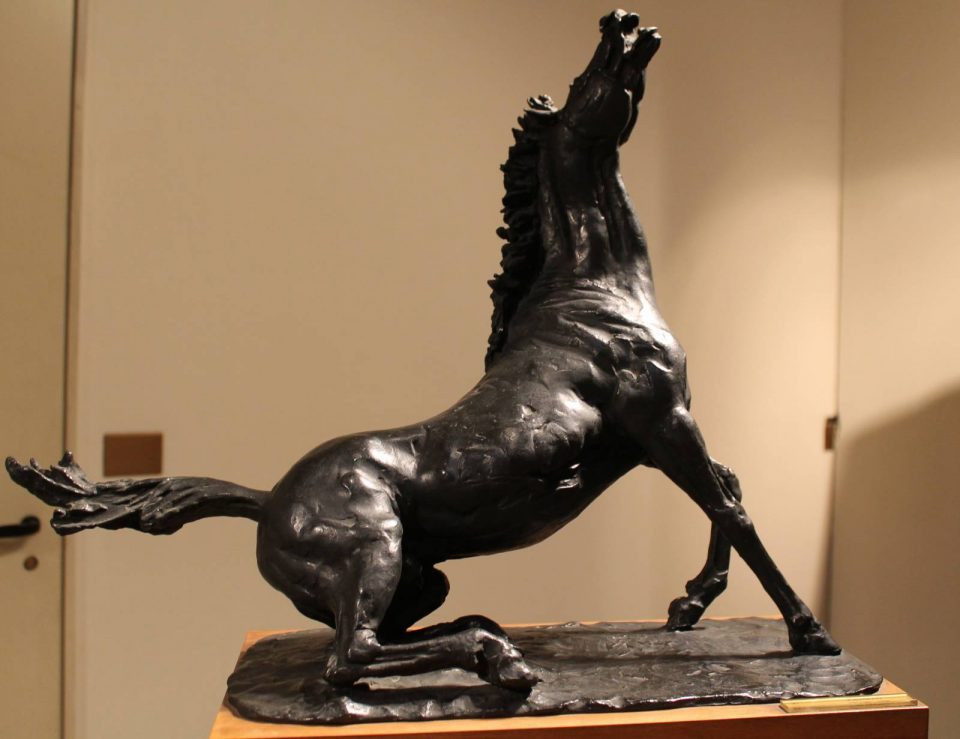
Francesco Messina, Cavallo Morente (1966) bronze sculpture 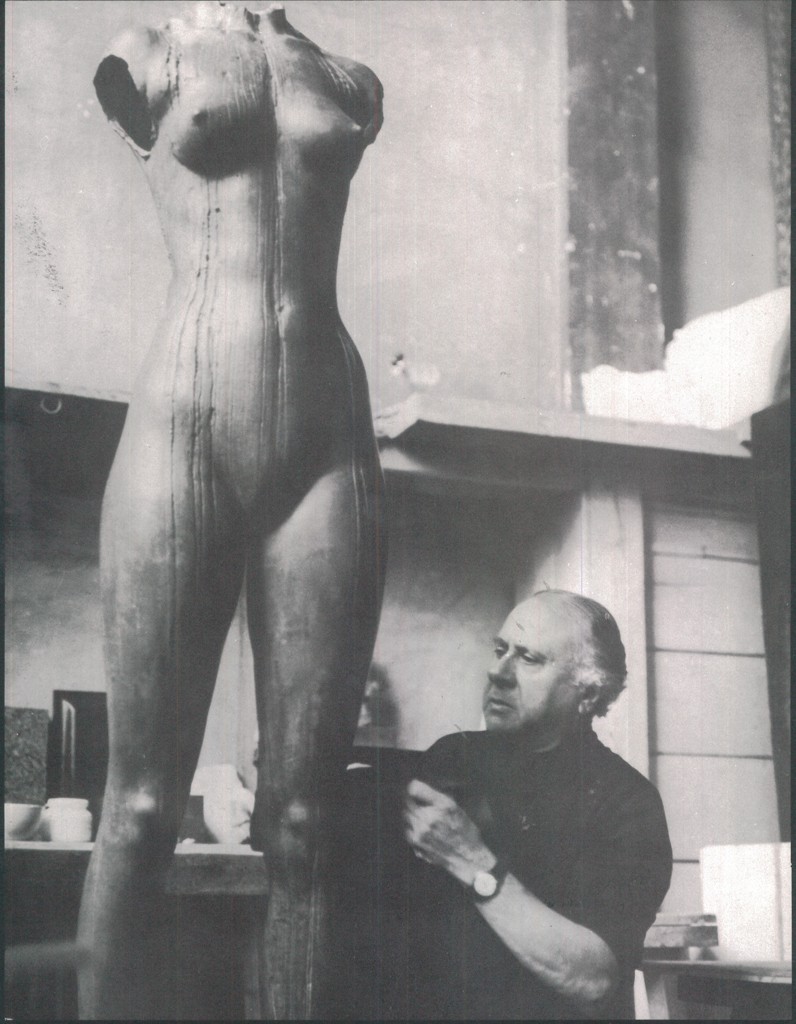
The artist Francesco Messina at work on the bronze Grande Torso Femminile (Great Female Torso) in 1970
The works from the Studio Museum’s permanent collection are put in relation with the exhibition’s theme, namely the different interpretations of sculpture given by Canova and Jodice. Canova’s works, on loan from the Civic Museum in Bassano del Grappa, include a plaster cast of the Italic Venus, four dotted line drawings, an etching and a plaster high-relief. These works offer great insight into the sculptor’s volumetric treatment of the human figure, a theme resonating throughout Canova’s entire career and granting him recognition both in Italy and abroad.
The extraordinary quality of his sculptural pieces is reinterpreted through the lens of Mimmo Jodice, who provides a new, intense perspective on these renowned works, allowing for a modern reading of classicism. The 47 large-format black and white photographs present in the exhibition emphasise the light and volume of Canova’s masterpieces through a very personal interpretation, which highlights the small details and offers unprecedented glimpses on the sculptures which have over time become fundamental elements of our collective cultural knowledge. Jodice’s “portraits” contribute to untangle the allure of Canova’s smooth marbles, with his close-up images counterbalancing the artist’s drawing and playing with the two-dimensional nature of these project sketches. The photographic medium however does not impact the solid, three-dimensional nature of sculpture, which is made even more tangible by embracing the printed image’s potential.
Ultimately, the exhibition aims to look into the bidimensionality of sculpture through the artworks of two antipodean artists, beyond the temporal limits of their lives and in search of their thematic commonalities, creating a symbolic itinerary that harmonically connects them with the classicist full-relief sculptures by Francesco Messina, in the suggestive context of the church’s crypt.
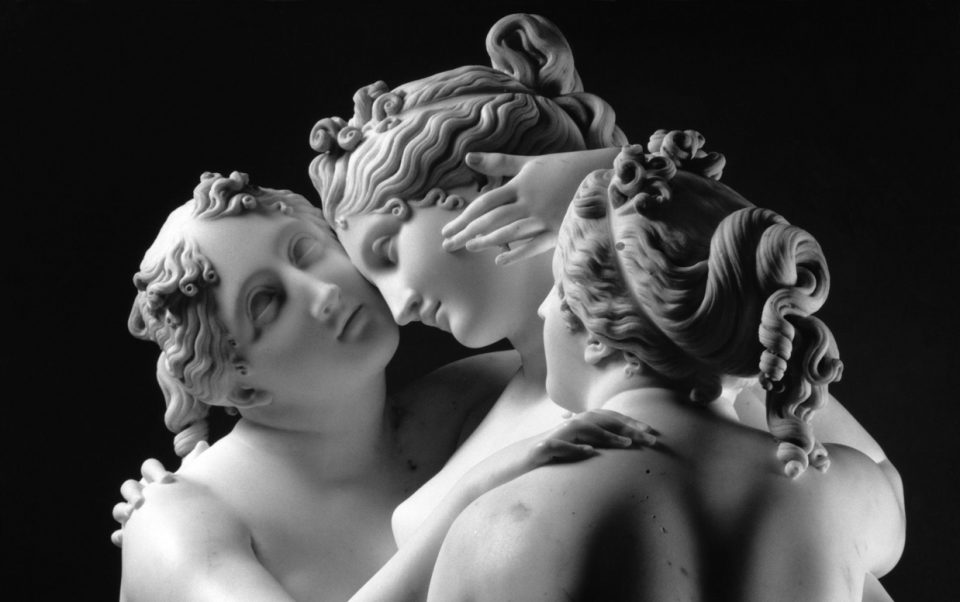
Mimmo Jodice, Canova’s Three Graces (2015) photographic image
Image credit: Sky Arte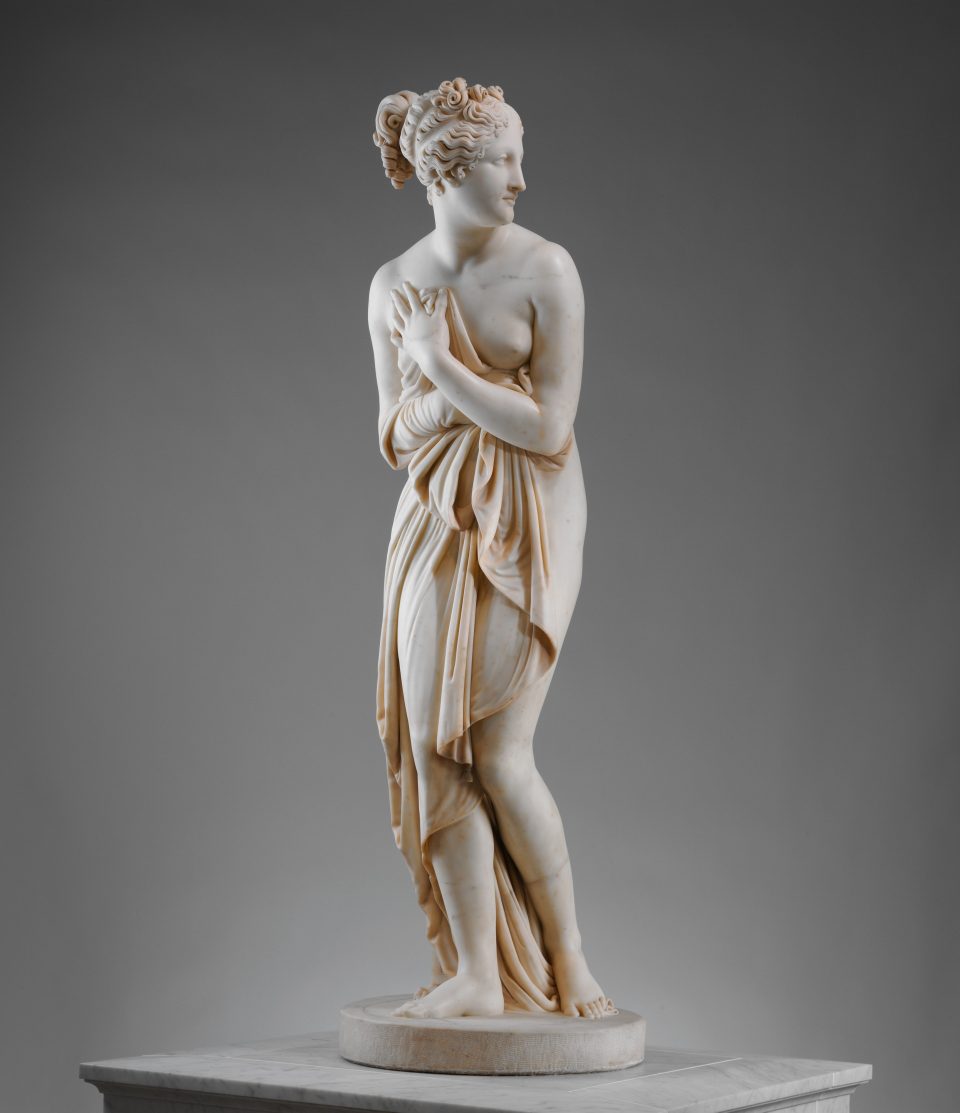
Antonio Canova, Venus Italica (1822-23), Carrara marble
Image credit: The Metropolitan Museum